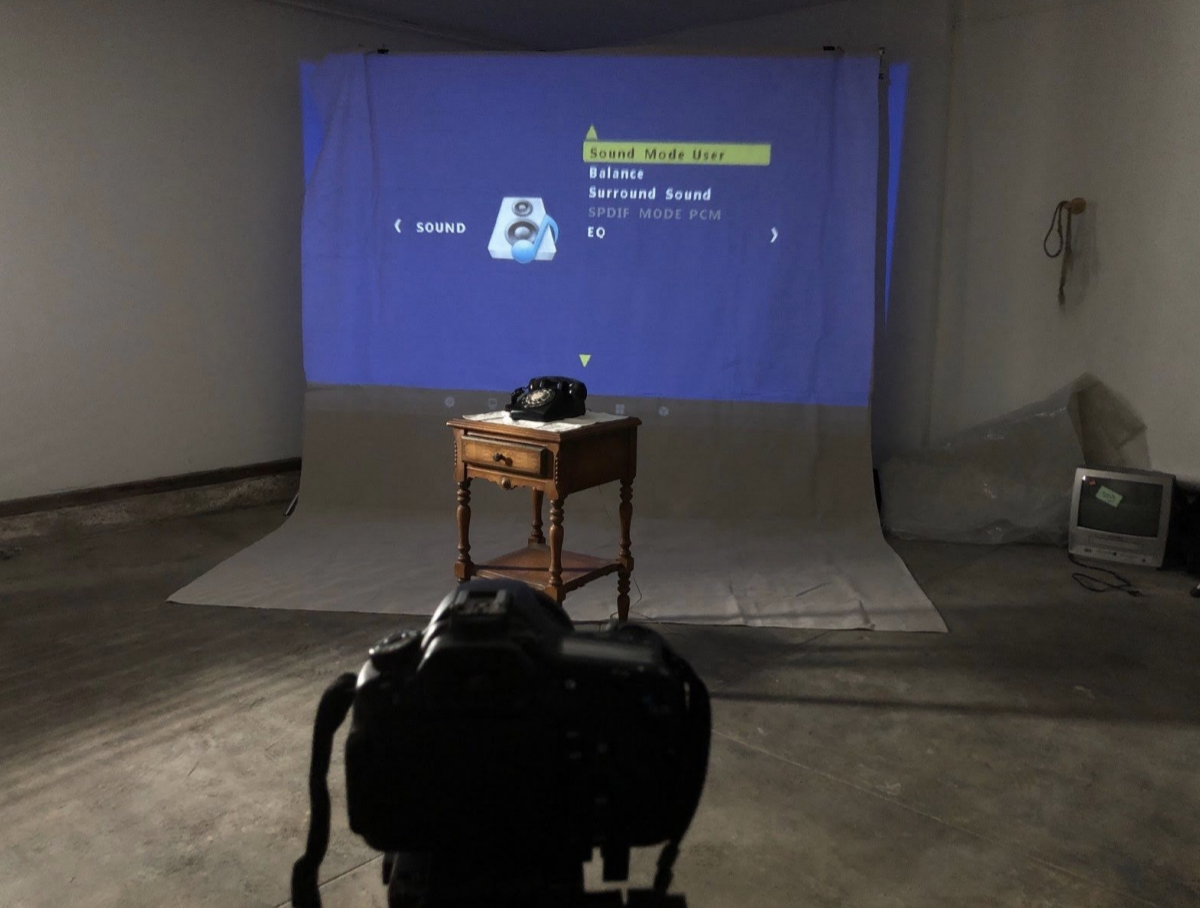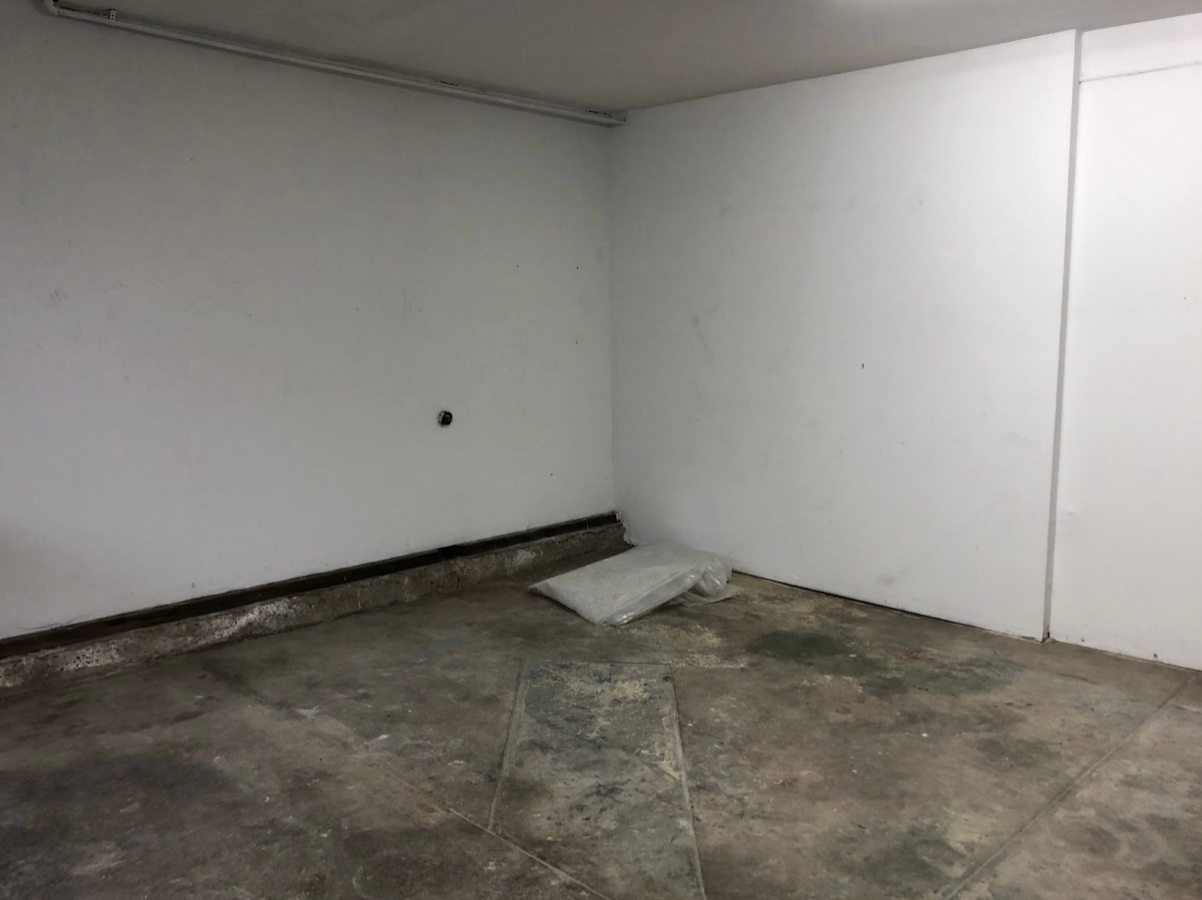4.08 This Is a Call
Matthew Anderson
When I learned the theme for this edition of Tele- would be a “collect call” the
immediate idea that came to mind was a Collective Call (to Action). So I wanted that to
be incorporated into my piece, and then find a way to tie that into the way I’d “translate”
the previous work. I knew I would probably do a film, and I intended to involve a
sculptural element.
With such charged climate of activism going on currently (and hopefully to
continue for the foreseeable future) in our nation, I’ve been educating myself further into
how white supremacy permeates our society on a systemic level - this issue being core
to what I as a white person / we as white people, need to work on. I’ve been wondering
how I can be more inquisitive and bold in addressing these pressing issues within my
work, and this moment inspired me that now is the time to try.
So when I saw/read GS’s poem Every Line, which is the work I “translated” for
Tele-, the content contained within relating to addressing dismantling Capitalism very
immediately connected to the themes of white supremacy in America’s heterosoc
capitalist makeup. But it was the form of their piece, that it is an erasure poem, which
helped inform the way I would find the form of my film using stark bouts of darkness and
flashes of light. Recently I’ve been experimenting with techniques of quick cutting
between still images in my film work (Some Things Hidden (2020), and Various
Expressions (2020)) and though I didn’t originally envision employing such technique in
this piece, the moment I began reading Every Line, I knew that the technique would be
a formally appropriate way to deliver this concept. Over the course of the week creating
this piece, I went through many stages of processing what this would would become,
but very quickly I identified the idea of reducing the thoughts / ideas through minimalist
symbolic imagery - black grain, white grain, and interacting frames of half and half, split
black and white grain through images I had recently shot on 35mm.
For This Is A Call I asked several of my white, black and brown friends to reflect
on Whiteness - I asked them to Call In, Call Out some of the privileges and
responsibilities that White people need to confront and what kind of Call(s) to Action(s)
should be approached by White people now. An important thing that we should be
doing is having conversations around our whiteness in order to deprogram our minds
from this superiority complex, and to challenge the white supremacy that we’ve
inherited and perpetuate systemically and individually.
The entire process included much internal and external questioning -
philosophically and formally. As a white artist, how can I engage with the current
dialogue and participate in promoting personal and social change? Where do I fit in
this conversation? Should I be having this conversation “publicly”? What does it mean
to focus this conversation of whiteness into “my” art? How can I decentralize myself
from the work, while also addressing my whiteness and be inclusive of a diverse array
of perspectives... and then, how are all of these perspectives incorporated into one
film? The film turned out to be just over 11 minutes, but it could easily have been
longer. I received voice memos (or, calls) from several friends that were anywhere
between 2-6 minutes long, and I had to choose which moments, statements,
questions, ideas would be included, without the piece feeling too long or too short. I
wanted to give the voices their appropriate time and space to present their opinions,
and organize them in an order where they reflect off of, react to, or edify one another.
Formally, I had a roller coaster of a time deciding on exactly how I would
incorporate these Calls that my friends graciously contributed for the project - I wanted
to film with some friends, and do something very different from what you ultimately see
on screen, but with coronavirus I wasn’t comfortable asking anyone to put themselves
in such a position. I wanted to include a sculptural element, I wanted to project these
flashes of dark and light into a space and over some objects... and my ideas continued
to shift as I wrestled with what the best way of communicating this dialogue should be.
I borrowed a friends studio for a few days, and built a set - a set which you ultimately
do not see in the film. The only visual element that made it into the film, aside from the
b&w film grain, is an old rotary phone that I found on craigslist for use in this film. I
spent almost every day of my assigned week focused on this project - blessed and
cursed, currently “not working” because of the coronavirus pandemic, and I was
making the film up until the very last minute.

I wrestled with how I would present the core of this project in a visual way, and
my early ideas about incorporating something sculptural continued to seem less
connected to what I felt was the heart of it. I wanted to challenge myself to work in
other dimensions than I’m comfortable in - and I felt like I failed that challenge because
I didn’t “succeed” in accomplishing the incorporation of that into the work. It seemed
like the most progress I made in creating this work was in the editing process, which is
where I’m most comfortable since I work as an editor and also largely edit my own
films. So I felt like I was taking the easy way out after going through all of the trouble to
use my friends studio and barely use anything that I had done in there. But I still
managed to discover a lot of interesting ways of doing throughout the editing process -
my final day of working on the project is when I kind of accidentally started animating
in the film with my hand and the phone. That was a first for me. Aside from one other
experiment in chalk-drawn animation in college, this was my first time animating still
images that I had captured. I didn’t intend or expect to do that at all, it just sort of
happened. In fact, I only discovered the ending to the film about 40 minutes before the
deadline. That was a happy accident sort of moment. I seem to encounter those at
least once during the process of making most of my projects.

So this is a first, small attempt to encourage individual and communal
conversation, education, looking to our BIPOC leaders, brother and sisters, and the
opening oneself up to criticism so that we can learn to be better at recognizing our
complicity with white supremacy, calling these things out within ourselves and those
around us with whom we have influence. This project feels just like a fraction - a sketch
of much larger ideas to be explored that I, as a white person, intend to continue in my
life and in my work going forward. As one of the voices puts it, this journey is being in
“eternal recovery” from whiteness. And we owe it to the world to confront and
dismantle the catastrophe we’ve allowed to continue through our silence and violence.
—Matthew Anderson
+Bio
Matthew Anderson is an artist and filmmaker currently living and working in Los
Angeles. His work often centers around multiplicity of perspectives and queer
experience. He is the writer and director of the feature film Baja Come Down and
creator of Deviant Proposals: An Anti-Binary Journal published by Candor Arts. His film
work also includes short, experimental and documentary projects which have shown
internationally across Europe, Australia, North and South America. He is co-creator of
Shadow Kitchen, a Los Angeles filmmaker collaborative, and co-creator of the LA
Cinema Calendar. He holds a BFA from Chapman University.
andersonmatthew.com
instagram @and.matthew
twitter @_andmatthew